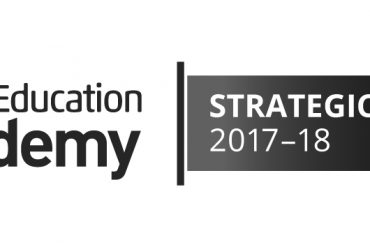It is clear that we will continue to have students who are unable to travel to campus in 2021. Some units of study have been designed to run completely online and have been offered in this mode for many years. Others have experiential components requiring students to attend campus which will not be available to those unable to do so. Most units, however, will provide a mixture of in-person and remote options, as they are doing in semester 2 of 2020. This article describes 2021 teaching approaches for these units at the University of Sydney that will ensure that all students can successfully and safely progress.
Teaching modes
In setting up a timetable for units running a mixture of face-to-face and remote classes, a number of approaches can be taken for each type of class:
- Some classes run separately for remote and local students. Small group classes such as tutorials can be timetabled separately. For example, remote students attend Zoom tutorials and local students can choose between these or in-person classes held at different times or at the same times with different teachers.
- Some classes run at the same time for remote and local students. In ‘mixed-mode’ or ‘hyflex’ delivery, some classes are delivered at the same time with local students physically present whilst remote students participating virtually. This style is the hardest for both teachers and students. Ideally, separate instructors are needed to ensure all students can interact equally.
- Some classes are delivered remote for all students. Large lectures and seminars will be delivered online for all students, either synchronously, commonly using Zoom, or through specially pre-recorded ‘chunked’ videos. For very small units or those with a very high proportion of offshore students, some other classes could also only be delivered remotely. This option should be used sparingly to ensure that local students are able to study on campus and the classes need to offer opportunities for cohort building, teacher-student and student-student interaction.
Learning in all locations
Our knowledge and experience of remote delivery has grown rapidly during 2020. Using the evidence on effective worldwide practice and rich feedback from Sydney staff and students of their experiences, we have developed detailed advice, summarised below, centred around 7 key pedagogic principles for teaching during the pandemic:
- Build teacher-student relationships
- Foster a sense of belonging and community
- Be clear in communications and expectations
- Measure and support engagement
- Engage through content delivery
- Offer meaningful assessment, feedback and academic integrity
- Be human
Large group teaching such as lectures or seminars
The main purposes of large classes are to inspire students and to support content delivery through engaging teaching, at scale. The main challenges are ensuring interactivity, a sense of belonging, and human connection. Classes where the main mode is the teacher talking, whether delivered online, face-to-face or via pre-recorded video should be avoided.
| Future state | Interim recommendation during pandemic | Considerations |
| Return to on-campus large class | Synchronous live online large classes |
|
| Maintain online large class | Start adapting material for asynchronous but interactive online teaching and learning |
|
Broad advice in each case is as follows.
- Synchronous online. Ideally provide class materials (e.g. links, videos, readings, questions, quizzes, discussions) in advance of each class and run at least some interactive activities during class (e.g. questions/polling, worksheets, Zoom chats, breakout discussion, shared documents/whiteboards, etc). Offer regular, live Q&A outside of class and/or drop-in Zoom office hours.
- Asynchronous online. Provide clearly structured curation of learning resources (e.g. links, readings, short pre-recorded videos by the lecturer(s)) and activities (e.g. questions, quizzes, discussions) and offer clear timing guides, progress markers and opportunities for feedback. Support asynchronous activities with live (synchronous) small group classes or workshops and use relationship/engagement tools such as SRES to support tailored communication and relationship building with students. Offer regular, live Q&A outside of class and/or drop-in Zoom office hours.
- In both cases, deliberately provide meaningful opportunities for cohort building, teacher-student and student-student interaction.
Small group teaching such as tutorials
Small group teaching should continue to be offered live (either in-person, synchronously via Zoom or both) and provide opportunities for students to collaboratively debate ideas and their application and to test, apply and deepen understanding of core ideas, concepts and skills.
| Option | If unit has multiple small classes… | If unit has only one small class… | Considerations |
| Synchronous in-person | Suitable | Suitable |
|
| Synchronous online | Suitable | Suitable |
|
| Mixed-mode (simultaneous in-person and on Zoom) | Not recommended | Suitable |
|
In each case, the advice is to:
- Take advantage of live time for interaction with and among students and teachers
- Ask students to prepare for class (e.g. short videos or readings prior to class), possibly with nominal marks attached to meaningful preparation activities
- Over-communicate schedules, resources, expectations and provide clear structure for class activities
- Provide a space (e.g. discussion board, Padlet, Canvas chat, shared online document) and prompts for continuous engagement in the class and to help the teacher monitor engagement and assist where most necessary
- Redesign as many activities as possible to be ‘online by design’ in case a rapid pivot is necessary
- If the class is ‘hyflex’ or mixed mode, dedicate some specific tasks to each group of students
- Always devote some time to Q&A
Assessment and feedback
With much assessment moving online, there is a huge opportunity to rethink its volume and nature, with a shift in favour of formative assessment and helpful feedback, and relying on more authentic and realistically contextualised assessment tasks. Assessing online provides an opportunity to increase the use of authentic, multimodal assessments such as videos, podcasts and blogs replacing essays and exams. In general:
- Be clear and consistent in advice on assessment
- Provide opportunities for practice and feedback
- Design for integrity
- Design for authenticity
- Avoid over-assessment
- Mark online
Tell me more!
- University of Sydney educators can access free 30 minute consultations with an educational designer – book an online consult here at a time that suits you.
- Access a practical guide about teaching during the pandemic, based on evidence and experience from around the world.






5 Comments